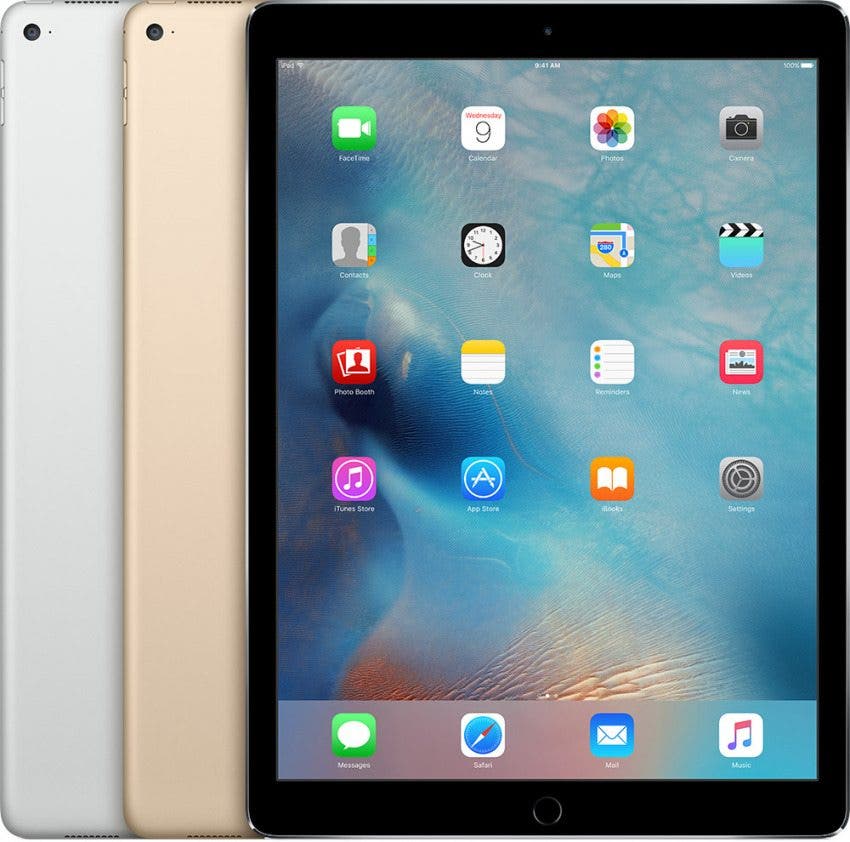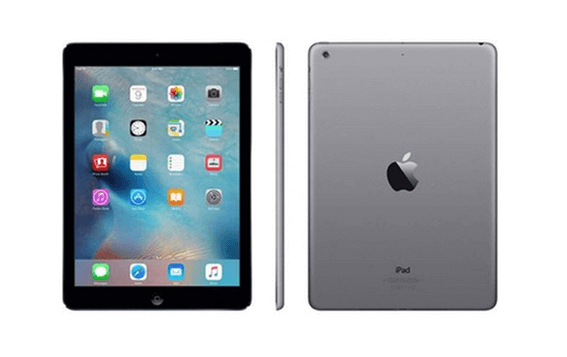THE HISTORY OF APPLE I PAD TO THE CURRENT.
THE HISTORY OF APPLE I PAD TO THE CURRENT.
Before all else:
Mac was exploring different avenues regarding tablets sometime before the iPad turned out. Its Newton MessagePad PDAs — going back to 1993 — were seemingly tablet-like, but unrefined by present-day norms with restricted applications, high contrast shows, and all-out reliance on a stylus. The organization additionally prototyped an all the more remarkable PowerBook-based tablet called the Penrite however chose not to dispatch it.Work on the iPad itself follows back to 2004 when fashioner Jonathan Ive and others created another tablet model. The item was initially expected to dispatch before the iPhone, yet the organization came to choose the last was increasingly significant, debuting it in 2007 utilizing comparable innovations.
After the iPhone turned into a hit, gossipy tidbits twirled around tablet plans, with clashing reports on what an item would be called and what it may do. At last, Apple CEO Steve Jobs declared the iPad on Jan. 27, 2010 at the Yerba Buena Center in San Francisco — quickly setting off influxes of both expectation and suspicion.
The original:
Preorders started on March 12, 2010, in front of an Apr. 3 U.S. discharge date at Apple's on the web and outlet stores. At first, just Wi-Fi models were accessible — 3G-competent models needed to hold up until Apr. 30, and afterward must be utilized with AT&T in either boundless or 250-megabyte plans. It wouldn't be until May 28 that any iPad was accessible outside the U.S.
On account of the organization's takeover of PA Semi, the iPad was the principal item to utilize an Apple-structured processor, the A4. It additionally highlighted a 9.7-inch, 1024-by-768-pixel show, and choices for 16, 32, or 64 gigabytes of capacity.
The tablet's mark accomplishment was bringing the iPhone's multi-contact interface to a lot bigger presentation, permitting it carries on progressively like a PC. Even though it despite everything came up short on an open filesystem or much customization, Apple built up a custom adaptation of the iPhone OS for it, for example letting individuals use applications and the home screen in any direction — in contrast to the iPhone, which at the time was carefully vertical.
The item likewise proclaimed the appearance of iBooks and the iBookstore, with the expectation that individuals would need to understand books, magazines, and papers in the new arrangement. Apple's agreement with distributers to battle Amazon's strength of digital books would, in the long run, bring about extreme lawful censures.
Deals of the iPad were solid out of the entryway. More than 300,000 were sold at dispatch, and by May 3, 1 million. Towards the year's end, iPads were beating Macs each quarter.
iPad 2:
Discharged March 11, 2011, the iPad 2 incorporated a quicker A5 processor, however, it was maybe generally critical for refining Apple's structure and ideas. The item was both lighter and more slender and was the main model to help Smart Covers, including magnets which kept cases appended as well as would wake an iPad when opened. A gyrator just as front-and-back confronting cameras opened up other new capacities, including FaceTime.
From numerous points of view, the iPad 2 turned into Apple's tablet workhorse. The gadget remained discounted for quite a long time, with a minor correction after the third-age iPad was discharged, contracting the size of the A5 and improving force utilization. It had the option to run six distinct adaptations of iOS, from 4 through 9.
It was around this time Apple started pushing the iPad as an instructive item — an activity that would just quicken in the coming years.
"The new iPad" and iPad smaller than usual
2012's third-age iPad based on this establishment with the double center A5X processor, quad-center illustrations, and the first-since forever Retina show on an iPad, pushing goals to 2,048 by 1,536. It additionally upheld LTE, however not over the globe.
The third-age gadget was under-fueled for the retina screen. In this way, A fourth-age iPad — discharged in October that year — took a similar by and large plan and redesigned it with an A6X chip, FaceTime HD, and more extensive LTE similarity. It was likewise the first iPad to embrace a Lightning port, surrendering 30-pin connectors.
Hoping to fight off gadgets like the Amazon Kindle Fire and Google Nexus 7, Apple at the same time reported the iPad little, a tablet with specs like the iPad 2 however in a littler and lighter 7.9-inch position.
iPad Air and Mini 2:
The Air, delivered in November 2013, was another genuine wound at updating the iPad. The gadget was much more slender at 7.5 millimeters, and 22 percent lighter than the iPad 2. Bezels were contracted, cameras were redesigned, and it changed to an A7 processor coordinated by an M7 movement co-processor.Delivering around a similar time was the iPad small 2, comparable in many regards to the Air — most importantly, making the hop to a Retina show some idea should've been on the principal Mini.
iPad Air 2 and Mini 3:
By 2014 the iPad was getting to a lesser extent a marquee item, likely dominated by the dispatch of the iPhone 6 and 6 Plus, Apple's first iPhones more than 4 inches. This was exemplified by the Air 2 — which fundamentally picked up Touch ID, a triple-center A8X processor, and 2 gigabytes of RAM — however especially the Mini 3, which was basically a Mini 2 with Touch ID.
iPad Pro, Apple Pencil and Mini 4 :
In an offer to revitalize deals and give the iPad a role as a genuine apparatus, September 2015 saw the declaration of the first iPad Pro, a 12.9-inch, $799 tablet with an A9X processor, 4 gigabytes of DDR4 RAM, the main Smart Connector port and discretionary Smart Keyboard, besides, to help for the Apple Pencil — a low-dormancy stylus with pressure affectability and point recognition. While the Pencil was at last generally welcomed, it has once in a while been scrutinized at its $99 cost tag and the arrangement of its Lightning connector, which makes it stick out like a spike when connected to an iPad.A 9.7-inch Pro would follow in March 2016. This minimized to 2 gigabytes of RAM and a marginally more slow form of the A9X however presented Retina Flash for forward-looking photographs, and a True Tone flashes on the back. The True Tone brand was likewise applied to its showcase, Apple's first ready to coordinate the shading temperature to surrounding lighting.
The Mini 4 — still Apple's most recent in the Mini line — was uncovered simultaneously as the 12.9-inch Pro. The tablet was given an A8 processor and 2 gigabytes of RAM, by and by leaving it in the wake of its greater kin.
Every one of the three tablets did, be that as it may, bolster new performing multiple tasks includes through iOS 9: Slide Over, Split View, and Picture in Picture.
2017 and past:
Mac changed the iPad Pro line last June, guaranteeing that both had 2.34-gigahertz Hexa-center A10X chips, 4 gigabytes of RAM, and True Tone shows while redesigning the littler size to 10.5 creeps with littler bezels. "Advancement" improved the revive pace of their screens to 120 Hertz.To supplant the maturing iPad Air 2, the organization discharged a $329, 9.7-inch "spending plan" iPad in March 2017, equipped with an A9 processor and 2 gigabytes of RAM. It came up short on some Pro highlights like a back blaze, a True Tone show, and Apple Pencil similarity.
The organization refreshed the spending limit iPad at the Chicago "Field Trip" press occasion, giving it an A10 chip and Pencil support while as yet keeping down on things like a True Tone show and back blaze. For schools, the tablet was evaluated at $299.
iOS 11, discharged in September 2017, improved performing multiple tasks further with increases like a Mac-like dock, a committed Files application, and an intuitive for perfect applications.
What would be an ideal next step?
Current bits of gossip point to new Pros showing up in June, outfitted with Face ID like the iPhone X. They're relied upon to dump physical home fastens simultaneously, contracting size and weight significantly further, however, their showcases most likely won't go totally edge-to-edge.The organization is probably going to hold off on changing from LCD to OLED since the last is as of now expensive enough on iPhones. Inside the tablets will likely move to eight-center "A11X" processors.
The eventual fate of 2019 and the past is questionable. Apple will likely move to OLED or MicroLED, however just once it gets beneficial. Sooner or later the organization may be compelled to make iPads considerably more Mac-like, on the off chance that not by opening up their filesystem, at that point by supporting more peripherals and making iOS as adaptable as could be expected under the circumstances.




No comments